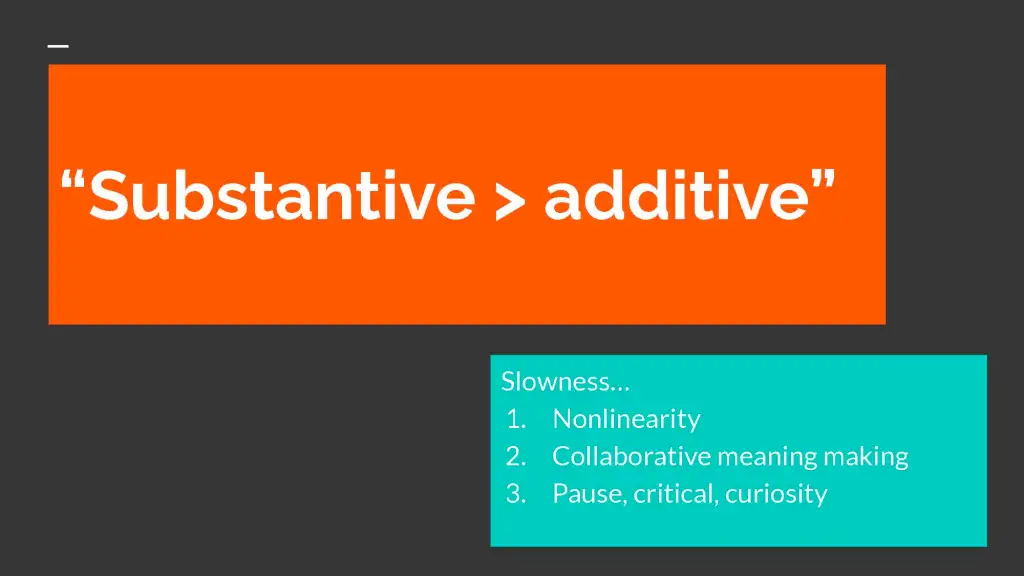Good post by Cindy.
- At the heart of worldbuilding is an intention to slowness.
- both painfully and pleasurably slow.
- ”Slow tactics”
- I permit myself to only ‘innovate’ (change the structure of the course) in either content or form.
- Topics are substantively aligned vertically instead of pressures towards horizontal expansion. We take ‘one thing’ and create opportunities to dive deeper, offering space for comparative wonderings but recognize that expertise in all the things is impossible. A final project that hones into the ‘one thing’ allows students to slowly explore.
- SLOW VIEWING WORKSHOP DESCRIPTION
- In this workshop, Dr. Nguyen invites participants to practice a ‘slow viewing, slow listening, slow thinking,’ process of meaning making in virtual reality that can be taught in classrooms focused on world history, global Asias, and digital media and design. Dr. Nguyen leads an exploration of Virtual Angkor, a virtual reconstruction of the medieval Cambodian capital of Angkor that seeks to explore the diversity and complexity of Southeast Asia in digital heritage studies.
Slowness as Method

My regular check in: “Is this new idea/approach/methodology substantive or additive?”
As of late, I’ve been repeatedly told: “You have so much energy!” “You’re so productive!” and I often blink back in cognitive dissonance to the comments because they shroud the quiet, recursive labor of what it means to do teaching and scholarship on the everyday. Folks see the product, not the process.
I’m slowly trudging through a mess and I embrace it. Slowness is a feature not a bug (particularly in virtual reality and computational analysis). Slowness is an invitation to critique and contextualize. Slowness is a pedagogical imperative to permit students to be curious again, to reflect and to celebrate. Slowness is a license to pause, rest, and do nothing.
Resources
- See complete Virtual Angkor teaching module here: https://cindyanguyen.com/2019/11/25/teaching-virtual-reality-module-analyzing-representations-of-angkor/
- Slides on Decolonial Data Pedagogy Lecture with Fulbright-Hays (Middlesex Community College and Lowell Public Schools) Group :https://docs.google.com/presentation/d/1zQFZdggH8Tp9ueUeUO0qoH9KRLVHNY6Vfkzqn1vNzjE/edit?usp=sharing
Slides
From here
Think Slow



















